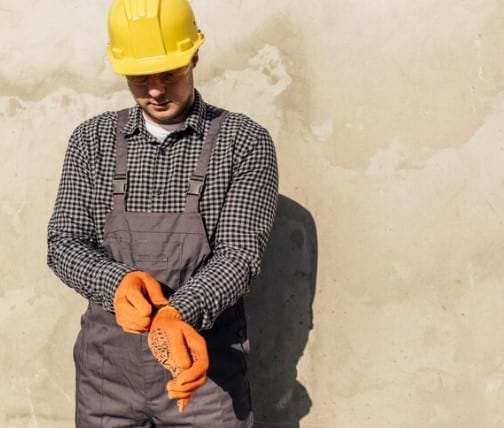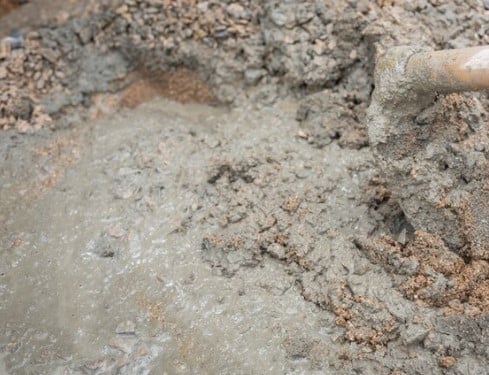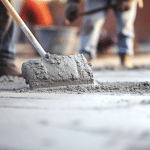Contents
Concrete is the silent hero of modern construction. This age-old material has supported civilizations for millennia. Yet, like all heroes, it isn’t invincible. Even this stolid stone can crack under pressure. But don’t fret! The right concrete contractor can be your sidekick in setting things straight.
Identifying Concrete Problems
Understanding the nature of these problems will enable you to communicate effectively with a contractor and ensure they implement the appropriate solutions. So, before seeking professional assistance, let’s define what we must be looking at:
- Visual Anomalies – From hairline cracks to gaping chasms, these visual cues are your first sign of trouble;
- Uneven Surfaces – This isn’t just a trip hazard. An uneven surface can indicate deeper structural problems;
- Discoloration – Concrete should generally have a consistent hue. Variations could be due to moisture, weathering, or underlying issues.
Fun fact: If concrete were a person, these problems would be akin to wrinkles and sunspots – indicative of age and environmental strain! So, when you see common concrete issues like spalling, scaling and discoloration, it’s time to call Will Fix!
The Role of a Concrete Contractor
When we think about construction, we often conjure images of burly workers in hard hats, giant cranes, and a cacophony of jackhammers. Amidst all this visual and audible noise, the concrete contractor operates, ensuring the most fundamental base of modern construction remains solid.
A concrete contractor is like the maestro of a grand orchestra, directing a team of skilled workers in the intricate ballet of laying, setting, and finishing concrete. This role goes way beyond mere labour. They are the nexus of knowledge, expertise, and craftsmanship in the realm of concrete construction.
Firstly, the contractor needs a deep understanding of different types of concrete. Not all concrete is created equal; each project might demand a unique mix or treatment. Whether it’s the ultra-durable mix used for high-traffic areas or a more porous variety for specific aesthetic applications, the contractor must get it right. It’s a bit like baking; too much or too little of one ingredient, and your cake – or, in this case, your floor – might just fall flat.

Next, consider the environment. Concrete behaves differently in the scorching sun compared to a freezing morning. A contractor needs to account for these variations, adjusting techniques and timing to suit. The same slab poured on a humid afternoon versus a dry morning can end up with significantly different characteristics. It’s almost like the concrete has its mood swings, and the contractor is the therapist who knows how to handle them.
How to find a reliable concrete contractor
And then there’s the all-important task of troubleshooting. Maybe the ground underneath isn’t as stable as one thought, or perhaps an unexpected rain shower threatens a freshly laid driveway. With their extensive experience, the contractor navigates these challenges, ensuring the end product remains uncompromised.
Moreover, they serve as a bridge between the client’s vision and the on-ground reality. They advise on what’s feasible, guide on aesthetics, and even help navigate bureaucratic mazes like permits and regulations. Reputable contractors like Willfix can help with basement exterior waterproofing and other tasks as well.
A concrete contractor is not just a builder but an artist, scientist, problem-solver, and guide.
They ensure that the foundation of our world, quite literally, remains solid and beautiful. And while the results of their work might often be beneath our feet, their importance is always top-tier.
Common Concrete Problems and Reasons Behind Them
Cracks and spalling in concrete are common issues that often perplex homeowners, builders, and even some inexperienced contractors. These unsightly blemishes are more than just superficial problems; they can indicate underlying structural concerns or material failures. Let’s delve deeper into the primary causes of these phenomena in concrete.
1. Inadequate Curing
Concrete requires proper curing to achieve its maximum strength and durability. It can lead to surface cracks if it dries out too quickly after being poured, especially under harsh sun or windy conditions. Proper curing maintains moisture levels in the concrete, allowing for a more uniform and controlled hydration process.
2. Thermal Expansion and Contraction
Like many other materials, concrete expands with heat and contracts with cold. If these rapid or extreme temperature changes, the stress can result in cracks. This phenomenon is more pronounced when the concrete can’t expand or contract freely due to surrounding structures or reinforcements.
3. Improper Mix

The balance of ingredients in a concrete mix plays a vital role in its final properties. Too much water can make the mix weak and more susceptible to cracks. Conversely, more water is needed to make it workable and create a porous structure. The quality and type of aggregates, cement, and admixtures also affect the mix’s performance.
4. Overloading
Subjecting the concrete to loads beyond its designed capacity, especially in its early stages, can cause cracks. This is especially true if the ground beneath hasn’t been adequately compacted or prepared, leading to differential settling.
5. Corrosion of Reinforcements
Steel reinforcements within concrete can corrode over time, especially if the concrete is porous or exposed to aggressive environments like saltwater. As the steel corrodes, it expands, exerting pressure on the surrounding concrete. It leads to both cracks and spalling.
6. Freeze-Thaw Cycles
In colder regions, water can seep into the porous areas in concrete. When this water freezes, it expands. Repeated freezing and thawing cycles can gradually chip away at the concrete surface, leading to spalling.
7. Alkali-Aggregate Reaction
Certain aggregates can chemically react with the alkaline compounds in cement. This reaction can lead to the formation of expansive gels within the concrete. Over time, these gels absorb water, swell, and exert internal pressure, resulting in cracks and spalling.
8. External Impacts or Abrasions
Repeated or severe mechanical impacts, like those from heavy machinery or even consistent foot traffic in some cases, can wear down the concrete surface and lead to spalling.
9. Poor Finishing Techniques
If the surface is overworked during the finishing process, it can bring too much water and fine materials to the surface. This creates a weak layer that’s more vulnerable to spalling.
Repairing Common Concrete Problems
Cracks and spalling (when concrete flakes off) might seem superficial but can lead to more severe issues. Also, uneven concrete surfaces may be signs of ground shifting under them. To preemptively fix problems before they become more serious, concrete contractors use:
- Sealing, aka crack injection, to fill cracks with a particular liquid substance. Sealers and hardeners can also prevent moisture intrusion and enhance surface durability;
- Resurfacing (a fresh layer for epoxy resurfacing) for extensively damaged concrete. Sometimes, concrete contractors use polymer-modified overlays to restore damaged concrete surfaces;
- Rebonding to unite concrete that separated from its reinforcement;
- Staining to address discoloration and to achieve a uniform look;
- Grinding can level out the surface for minor bumps if we are talking about uneven surfaces;
- Slabjacking involves pumping a grout mixture to lift the concrete back to its original position;
- Replacing the entire slab might be the best option in extreme cases.
As you can see, concrete cracks and spalling are among the most common issues property owners face. That’s why there are already dozens of ways to fix them. Not to risk with DIY solutions – contact concrete contractor Will Fix and get the best project for your situation.
Preventive Maintenance and Future Considerations
Prevention is better than a cure. Here’s how to keep your concrete in tip-top shape:
- Simple REGULAR cleaning can prevent many problems;
- Sealers protect against stains, weather, and minor cracks. You can also use special coatings;
- Ensuring the concrete mix is correct from the start is vital. Also, consider factors like proper drainage to prevent water pooling;
- Don’t use harsh chemicals to clean your concrete.
Proactive maintenance is essential to prolong your concrete’s lifespan and prevent future problems. We wrote the same in one of our previous articles, “How to Give a New Look to Your Concrete Driveway.” The best way to save thousands of money is to inspect your concrete surfaces regularly and address potential issues before they escalate.
Contact Us and Forget about Concrete Cracks
From the floors we dance on to the driveways we park on, concrete plays a silent but essential role in our lives. By understanding its problems and how to address them – with a trusty concrete contractor by our side – we ensure that this rock-solid material stands the test of time. Whether it’s a minor crack or a significant crater, remember every concrete problem has a solution. All you need is the expertise that we at WillFix, the underpinning company, have!
Concrete Contractor FAQ
-
What methods are used to repair cracked and spalled concrete?
Various methods are used to repair cracked and chipped concrete, such as crack sealing, re-pointing, bond repair, staining, grinding and sealing the slab.
-
Are there any signs that indicate ground displacement beneath a concrete surface?
Signs of soil displacement beneath the concrete surface can be cracks and spalling as the concrete peels away.
-
When should I contact a concrete contractor instead of fixing the problem myself?
Contacting a concrete contractor is recommended in cases of severe damage or when attempting to fix the problem on your own could worsen the condition of the concrete.
-
How can I get the benefits of using sealers and hardeners when working with concrete?
The use of sealers and hardeners prevents moisture penetration and increases the durability of the surface.
